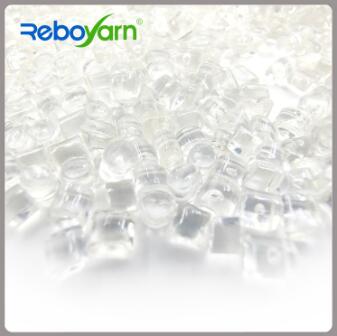From Bottle to Bright: The Manufacturing Journey of rPET Cationic Granule Bright
2024-03-12
In the quest for sustainable alternatives to traditional plastics, rPET Cationic Granule Bright stands out as a beacon of innovation. This eco-friendly material offers not only environmental benefits but also exceptional brightness and versatility. But how exactly is rPET Cationic Granule Bright produced, and what are the key manufacturing processes involved? Let's dive into the fascinating journey of transforming post-consumer PET bottles into vibrant granules.
1. Collection and Sorting
The production of rPET Cationic Granule Bright begins with the collection of post-consumer PET bottles. These bottles are sourced from recycling facilities, municipal recycling programs, or bottle collection centers. Once collected, the PET bottles undergo sorting to separate them from other types of plastic and contaminants. Advanced sorting technologies, such as optical scanners and automated systems, are often used to achieve high levels of purity.
2. Cleaning and Preprocessing
After sorting, the PET bottles undergo a thorough cleaning process to remove labels, caps, and any remaining contaminants. The bottles are then shredded into small flakes using mechanical shredders or granulators. The resulting PET flakes are further washed and rinsed to eliminate any remaining impurities, such as dirt, debris, or residue.
3. Decontamination and Drying
To ensure the purity and safety of the recycled PET material, the PET flakes undergo a decontamination process. This process typically involves heating the flakes to a specific temperature under controlled conditions to remove any residual contaminants or impurities. The decontaminated PET flakes are then dried to reduce moisture content, ensuring optimal processing conditions in subsequent manufacturing steps.
4. Extrusion and Pelletization
The dried PET flakes are fed into an extruder, where they are melted and formed into molten polymer. The molten polymer is then forced through a series of screens and filters to remove any remaining contaminants or impurities. The purified molten polymer is extruded into strands, which are then cut into small pellets or granules using pelletizing equipment. These pellets serve as the raw material for the production of rPET Cationic Granule Bright.
5. Cationic Treatment
The key distinguishing feature of rPET Cationic Granule Bright is its cationic treatment, which imparts a bright and vibrant color to the granules. This treatment process involves the introduction of cationic dye molecules into the PET polymer matrix. The dye molecules bond with the polymer chains, resulting in enhanced brightness and color intensity. The cationic treatment is typically carried out in specialized equipment under controlled conditions to ensure uniformity and consistency of the coloration.
6. Cooling and Packaging
After the cationic treatment, the brightened rPET granules are cooled to solidify them and stabilize their properties. The cooled granules are then packaged in bags or containers for storage, transportation, and distribution to manufacturers and end-users. Packaging materials are often chosen to minimize environmental impact and maximize recyclability, aligning with the sustainability goals of rPET Cationic Granule Bright.
Conclusion
The production of rPET Cationic Granule Bright involves a series of intricate processes aimed at transforming post-consumer PET bottles into vibrant and versatile raw material. From collection and sorting to extrusion, pelletization, and cationic treatment, each step in the manufacturing journey is carefully orchestrated to ensure the highest quality and performance of the final product. By harnessing the power of recycling and innovative technologies, rPET Cationic Granule Bright exemplifies the potential of sustainable materials to revolutionize the plastics industry and pave the way towards a greener future.



